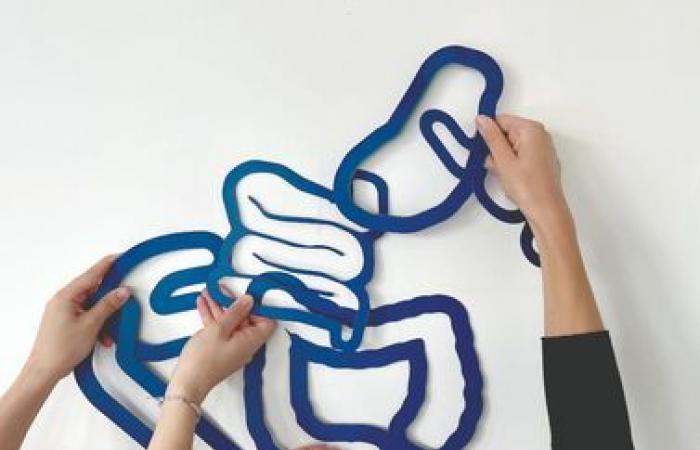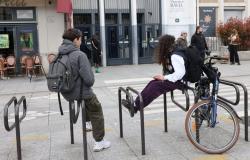
Supported by three prestigious institutions, pioneers in their respective fields, the Imagine Institute, the School of Decorative Arts-PSL and the Normal School-PSL, the Vulnerabilities and Capabilities “Living with a Genetic Disease” chair has the challenge of to accompany and help patients, children and adults, to “living with” the disease, by providing solutions where science and medicine cannot respond immediately. VULCA, an exploratory interdisciplinary chair of research and training combining medicine, design, exact, human and social sciences, in dialogue with the expertise and experience of patient associations and patient partners, intends to provide new tools and new modes of action and interaction. The morning of the launch will be an opportunity to present the ambitions of the Chair, its three scientific co-coordinators and to discover, in a sensitive activation, the first research and valorization projects resulting from past collaborations between the Institute and Imagine and the School. of Decorative Arts-PSL. Context and issue Today, nearly 50% of people living with rare genetic diseases do not have a diagnosis and nearly 85% do not benefit from targeted therapeutic treatments. The deterioration of their state of health, often seriously disabling and sometimes without visibility on its evolution, is a source of extreme vulnerability, physical and psychological, but also familial, economic and social. Children, the first to be affected by rare genetic diseases, evolve, with those around them, in a society that is not designed for them or adapted to their difficulties. The challenge of the Chair “Vulnerabilities and Capabilities, Living with a Genetic Disease” is to support and help patients. es, children and adults, to “live with” the disease, by providing solutions where science and medicine cannot respond immediately. In this context, the Chair will provide people living with a genetic disease, their families and health and research professionals with new tools and new modes of action and interaction. To respond to this challenge, three prestigious institutions, pioneers in their respective fields – the Imagine Institute, the School of Decorative Arts – PSL and the École normale supérieure – PSL are joining forces, convinced that the alliance of medical research , care, humanities, design and experimental sciences added to the expertise and experience of patient associations and partner patients, can provide additional resolving power to achieve the ambitions of the Chair . Ambitions and objectives Concretely help people suffering from a genetic disease By drawing inspiration from concepts from the human sciences, such as empowerment or encapacitation and by mobilizing participatory and conceptual methodologies of research through design, the projects of training, research and development carried out within the framework of the Chair will provide patients with the necessary tools to free themselves, as much as possible, from any form of dependence on illnesses, stigmatization, fixed roles, or confinement within a predetermined community. They will also allow patients to better cope with the uncertainties linked to diagnosis and treatment. This Chair will make it possible to explore and develop new methodologies, to invent relational, technological, aesthetic and social tools and forms, to carry out experiments as close as possible to the needs of patients and those around them, and to spread this knowledge and know-how in several sectors such as health (from research to care), mobility (transport, reduced and interconnected mobility, individual and collective), housing (indoor and outdoor spaces, public and private) , citizenship (associations, collectives, political bodies, participatory protocols), education and socio-professional integration (teaching staff, guidance professionals), the business world (from crafts to industry), etc. Beyond these impacts sought for the benefit of patients and their loved ones, the Chair will contribute more widely to the common good, through vast dissemination and promotion actions to a wide audience. The Chair, starting from work on rare pathologies, will also seek to extend these discoveries to more frequent pathologies, but just as incapacitating. An interdisciplinary chair combining humanities, science and design The alliance between medicine, design and the humanities offers a new perspective on illness, in particular genetic diseases. This encompasses several aspects: the role of the family in the care pathway, the physical and psychological suffering of patients and their loved ones, as well as challenges such as diagnostic wandering, therapeutic impasses, risks and uncertainties, the rarity of cases and isolation (often referred to as “gray areas”). In addition, the immediate material and sensory environment plays a crucial role in the ecology of care and the therapeutic chain, influencing self-esteem, perception by others and psychological involvement, particularly through elements such as “objects”. transitional”. The project leaders • Sophie Larger, designer and teacher in the Object Design training department of the School of Decorative Arts and member of the EnsadLab Symbiose research group. • Professor Lisa Friedlander, odontologist, university professor, and hospital practitioner at Paris Cité University. • Charlotte Jacquemot (Ph.D, HDR), researcher in cognitive sciences and director of the cognitive studies department at the Ecole Normale Supérieure. The chair is supported by the Richard Mille Foundation and the Groupama foundation.
Report an error, an update, an abuse





